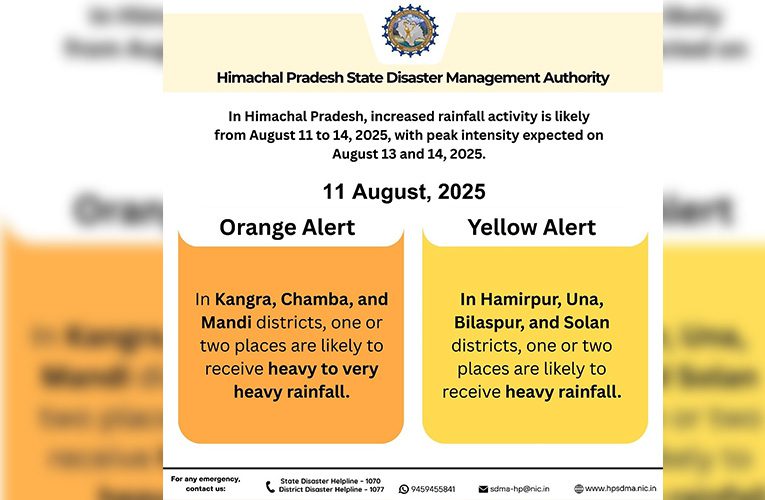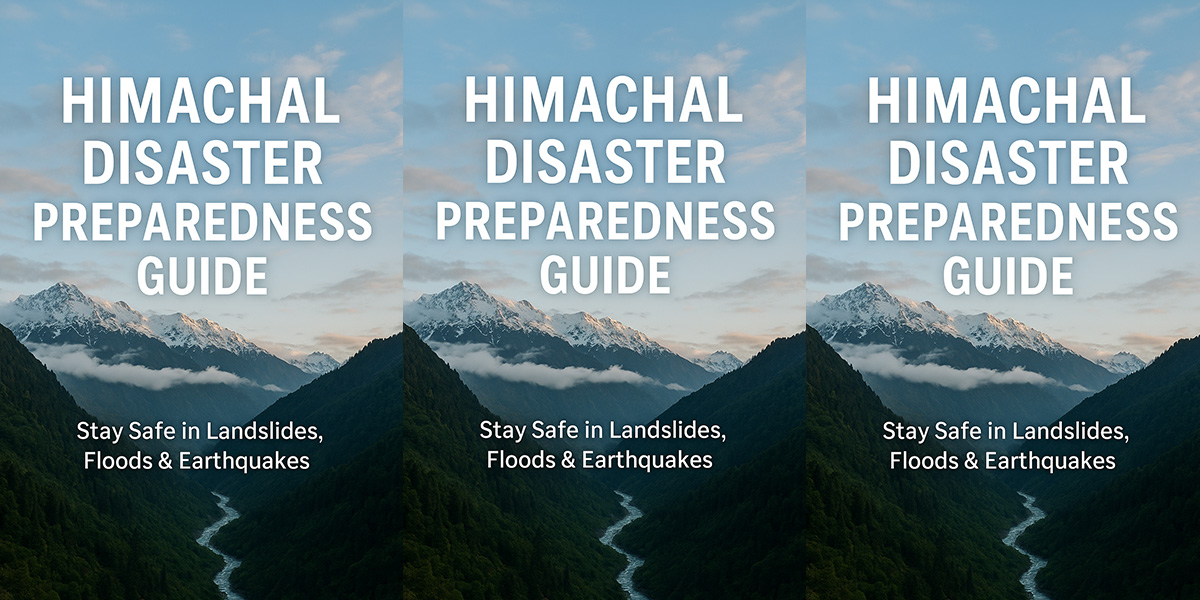Himachal Disaster Preparedness Guide – Stay Safe in Landslides & Floods
Common Risks: Landslides, flash floods, earthquakes, avalanches, forest fires.

Himachal Pradesh, often called the “Land of Gods,” is famous for its snow-capped mountains, lush valleys, and flowing rivers. But while the natural beauty attracts tourists from all over the world, the region is also highly prone to natural disasters. Landslides, flash floods, earthquakes, avalanches, and even forest fires are frequent occurrences due to the state’s mountainous terrain and unpredictable weather patterns. This Himachal Disaster Preparedness Guide is designed to help residents, travelers, and communities understand the risks and learn how to stay safe before, during, and after an emergency.
Natural disasters in Himachal Pradesh come in many forms. Landslides are common during the monsoon season when heavy rainfall loosens soil and rocks on steep slopes. These can block highways, damage homes, and cut off villages from essential supplies. Flash floods occur when sudden, intense rain causes rivers to swell rapidly, flooding nearby areas in minutes.
Earthquakes are another serious threat as Himachal lies in a high seismic zone. Even a moderate tremor can cause landslides and structural damage. In higher altitude regions like Lahaul-Spiti and Kinnaur, avalanches can occur during the winter months, trapping travelers and damaging infrastructure. During the hot summer season, forest fires can break out, especially in pine-covered areas, threatening wildlife and human settlements.
Preparation is the key to minimizing the impact of these disasters. Every household should keep an emergency kit ready, including a torch, batteries, clean drinking water, dry food, a first-aid kit, essential medicines, blankets, and a power bank. Important documents such as identification cards, insurance papers, and property deeds should be stored in waterproof bags to prevent loss or damage.
Residents and visitors alike should save emergency helpline numbers such as 1070 for the State Disaster Management Authority (SDMA), 100 for police, and 108 for ambulance services. It is also important to identify safe evacuation routes and shelters in your area and ensure all family members are familiar with them. Learning basic first aid skills like CPR and wound care can make a huge difference during emergencies.
Tourists should always check weather forecasts and road conditions before traveling, especially during the monsoon or winter seasons. Knowing how to respond during a disaster can save lives. In the case of a landslide or flash flood, move to higher ground immediately and avoid traveling on risky mountain roads.
During an earthquake, follow the “Drop, Cover, and Hold On” method—get down on the floor, take cover under a sturdy table or against an inside wall, and hold on until the shaking stops. Stay away from windows and heavy objects that could fall.
If you are caught in an avalanche, try to move sideways to escape its direct path. If buried, use your hands to create an air pocket around your mouth and nose to help you breathe until rescue arrives.
After a disaster, safety should remain the top priority. Listen to official updates from authorities instead of relying on rumors. If you are trained, assist injured people, but avoid putting yourself in danger.
In flood-affected areas, always boil water before drinking to prevent waterborne diseases. Document any property damage with photos or videos for insurance claims and disaster relief applications.
Community preparedness is equally important. Villages and towns can reduce risks by participating in mock drills organized by the SDMA, conducting awareness programs, and reporting unstable slopes, cracks in buildings, or blocked drains to local authorities before they become dangerous.
Staying informed is easier today with online resources. The Himachal Pradesh SDMA website (hpsdma.nic.in) offers real-time updates and safety information. The Indian Meteorological Department (mausam.imd.gov.in) provides weather alerts, and the National Disaster Management Authority (ndma.gov.in) has detailed safety guidelines for various disasters.
In conclusion, Himachal Pradesh’s beauty is matched only by its unpredictability. By following the tips in this Himachal Disaster Preparedness Guide, residents and visitors can reduce risks, respond effectively, and recover faster from natural calamities.
Preparedness is not just about protecting yourself—it’s about safeguarding your family, your community, and the environment we all share.

